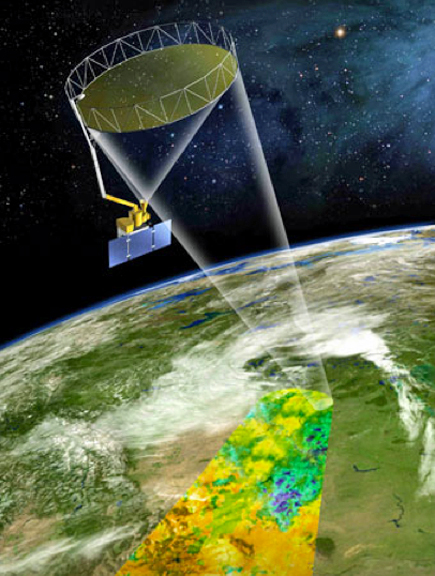[SatNews] On January 30th, NASA successfully launched the Soil Moisture Active Passive (SMAP) spacecraft from Vandenberg Air Force Base, on its mission to provide global measurements of soil moisture.

Artistic rendition of NASA's SMAP satellite.
Image is courtesy of NASA JPL.
A key feature of the spacecraft is the first application of the new AstroMesh-Lite® reflector, produced by Astro Aerospace, a Northrop Grumman (NYSE:NOC) company. This ultralight and extremely stiff reflector is ideally suited for high frequency communications and radar applications. Upon deployment, the reflector will help the satellite collect data while spinning atop the spacecraft on-orbit at nearly 15 revolutions per minute.
SMAP data will improve weather and climate prediction models by increasing our understanding of the processes that link Earth's water, energy and carbon cycles. In addition to soil moisture levels, SMAP also will identify frozen or thawed water, which will be used to detect changes in growing season length to help scientists better understand how much carbon plants absorb from the atmosphere each year. SMAP data will also be used to improve flood prediction and drought monitoring capabilities.
As the satellite orbits Earth, the mesh reflector, which deploys and expands to a 20-foot aperture, will provide a conically scanning antenna beam of approximately 40 degrees or a swath of 621 miles for total global mapping every two to three days. In spite of the complexities of the mission, the SMAP reflector weighs only 56 pounds. The extremely stiff boom, which deploys the reflector into position and reduces deflections caused by the spin rate, weighs 55 pounds. With the remaining launch restraint equipment weighing approximately 15 pounds, the entire system totals a mere 127 pounds.
The SMAP observatory launched into a 426-mile near-polar, sun-synchronous orbit, with equator crossings at 6:00 a.m. and 6:00 p.m. Boom deployment will begin 16 days after launch and the reflector will be fully deployed on day 20. SMAP is designed to operate for a minimum of three years. SMAP is managed for NASA's Science Mission Directorate, Washington, by NASA's Jet Propulsion Laboratory, Pasadena, California.
Since 1958, Astro Aerospace (www.northropgrumman.com/astro) has helped enable complex missions to Earth orbit, Mars and beyond with its innovative deployable space structures and mechanisms